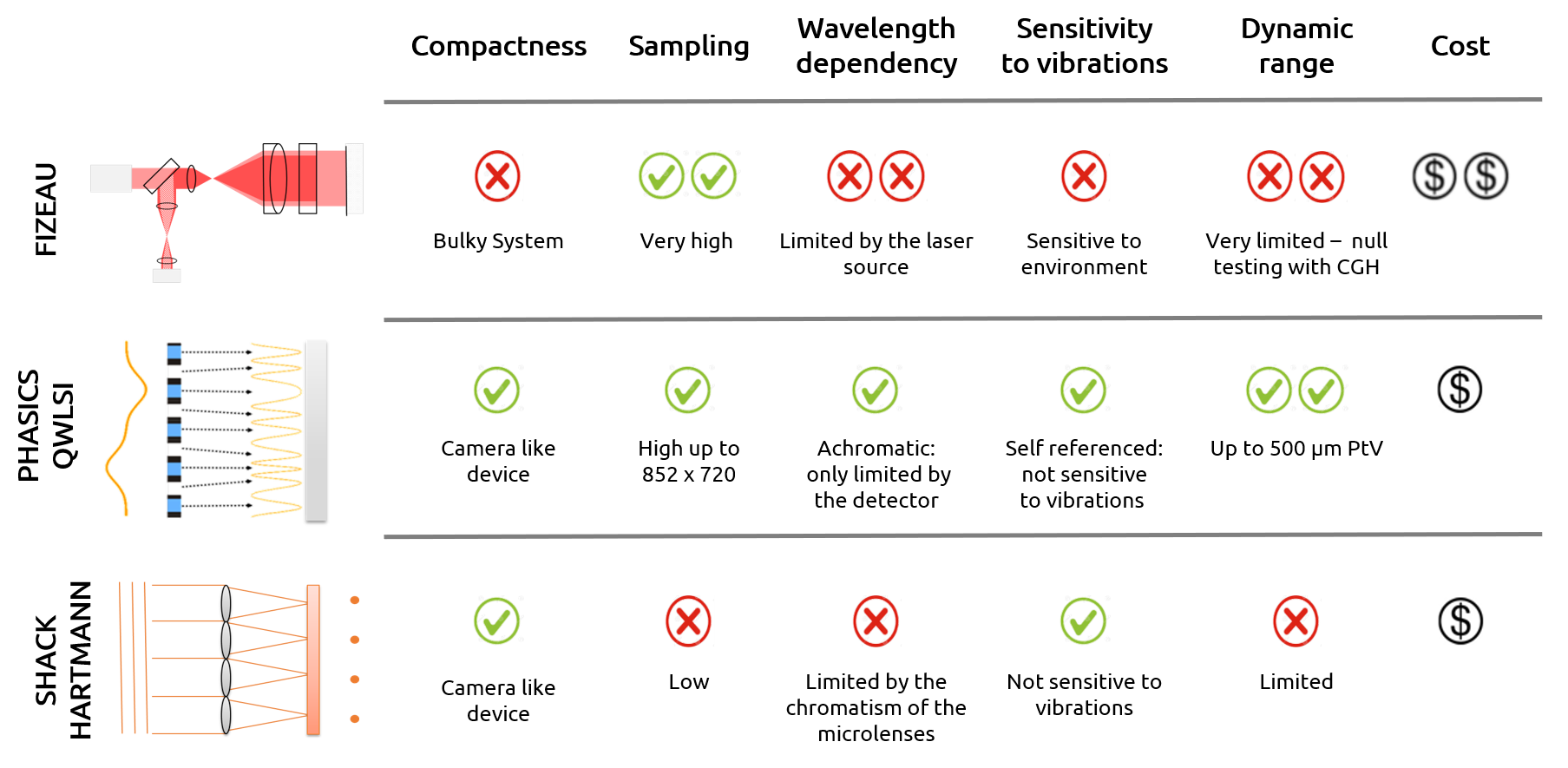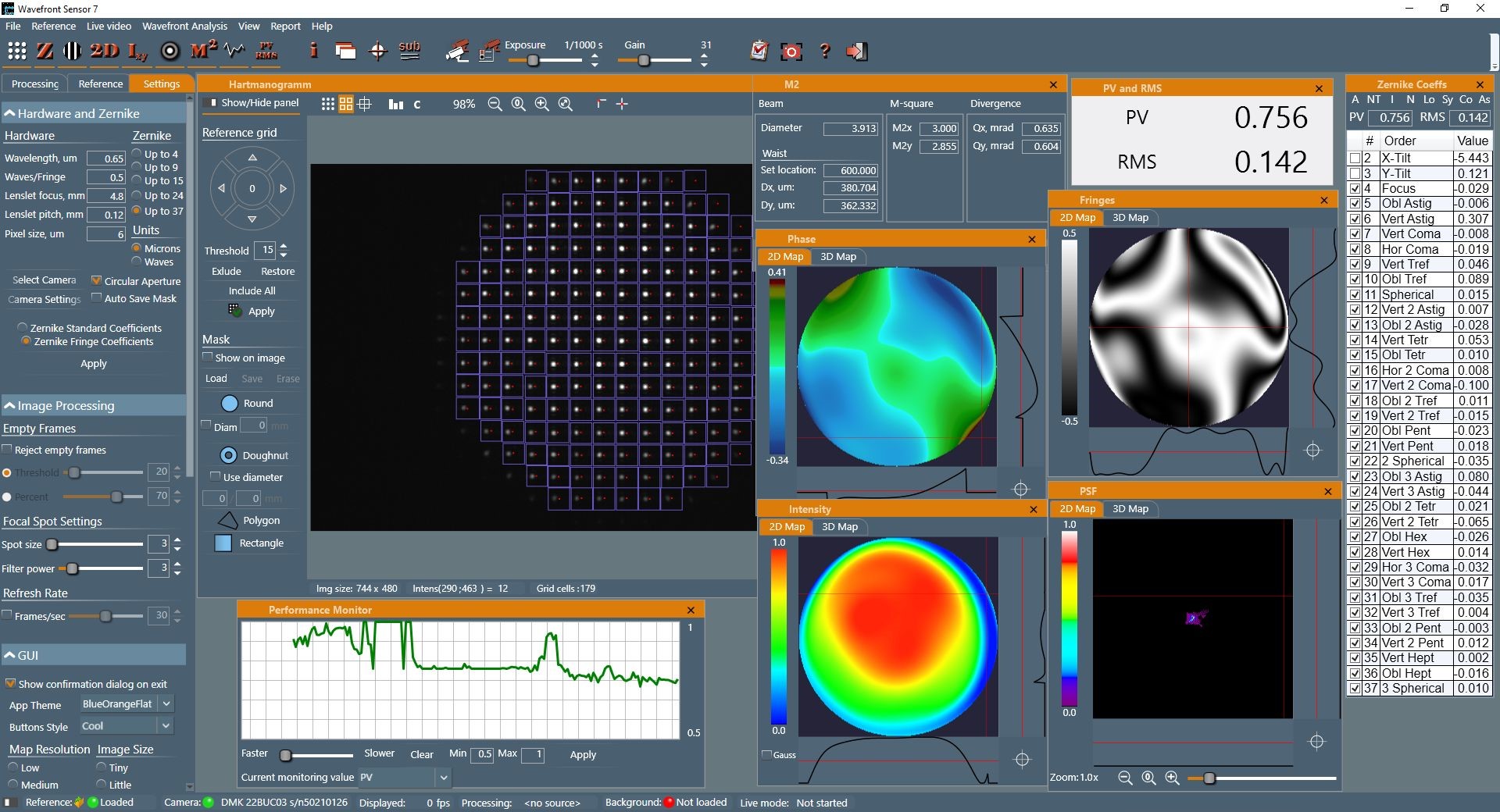Contents

Source: Phasics
The Shack–Hartmann Wavefront Sensor: A Comprehensive Guide
Introduction
The Shack–Hartmann wavefront sensor is a widely used device for measuring the wavefront shape of incident light. It is particularly essential in adaptive optics systems, where it helps correct distortions in optical systems. Named after Johannes Franz Hartmann and Roland Shack, this sensor plays a crucial role in various fields such as astronomy, optics characterization, and ocular diagnostics.
Operation Principle
The sensor consists of an array of microlenses and an image sensor. Each lenslet focuses incoming radiation to a spot on the sensor, and the position of the spot indicates the orientation of the wavefronts. By calculating the positions of these spots, the sensor can estimate wavefront distortions over the entire entrance area.
Calculation of Spot Positions
To determine spot positions accurately, the sensor uses computational algorithms to calculate the center of gravity of the intensity distribution. This method provides a higher position resolution than simply relying on the pixel with the highest intensity. It is crucial for achieving precise wavefront measurements, especially in challenging conditions.
Calculation of Wavefront Distortions
The sensor calculates wavefront orientations by analyzing the shifts in spot positions caused by wavefront tilts. By dividing the calculated spot offset by the distance between the lenses and the sensor surface, the sensor can determine the tangent of the wavefront orientation. This information is used to reconstruct the wavefront field and analyze optical aberrations.
Applications
Shack–Hartmann wavefront sensors find applications in various fields:
– **Astronomical Telescopes**: Used in adaptive optics systems to correct wavefront distortions in astronomical observations.
– **Characterization of Optics**: Helps characterize optical aberrations in lenses and lens systems.
– **Ocular Diagnostics**: Used to measure optical aberrations in the eye for prescribing corrective lenses.
– **Laser Beam Characterization**: Enables comprehensive analysis of laser beam quality by measuring the optical phase profile.
Comparison with Other Technologies
While interferometers like Twyman–Green interferometers offer higher transverse resolutions, Shack–Hartmann sensors excel in measuring a wide range of phase excursions. They provide valuable insights into wavefront distortions and are essential for various applications requiring precise wavefront measurements.
Conclusion
The Shack–Hartmann wavefront sensor is a versatile tool for analyzing and correcting wavefront distortions in optical systems. Its operation principle, calculation methods, and applications make it a valuable asset in fields ranging from astronomy to laser beam characterization. With its ability to provide detailed wavefront information, this sensor continues to play a significant role in advancing optical technologies.

Source: AKA Optics
Feel free to comment your thoughts.



